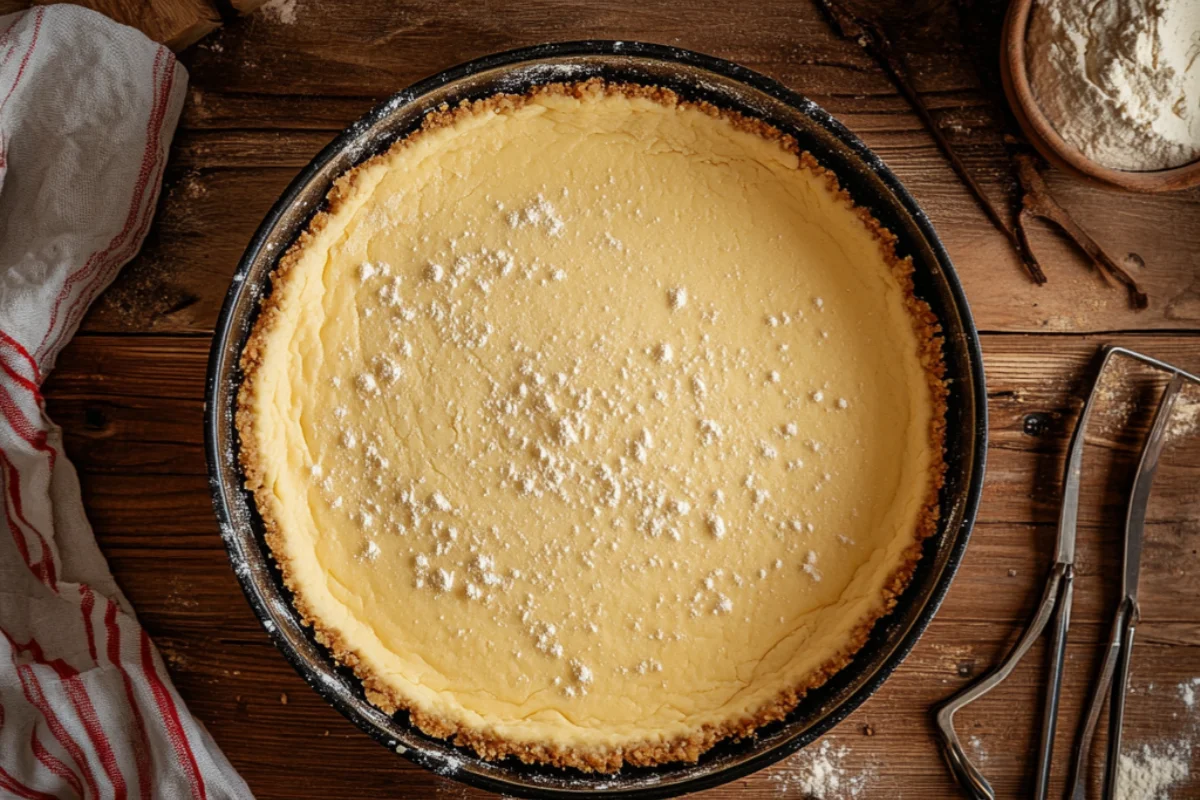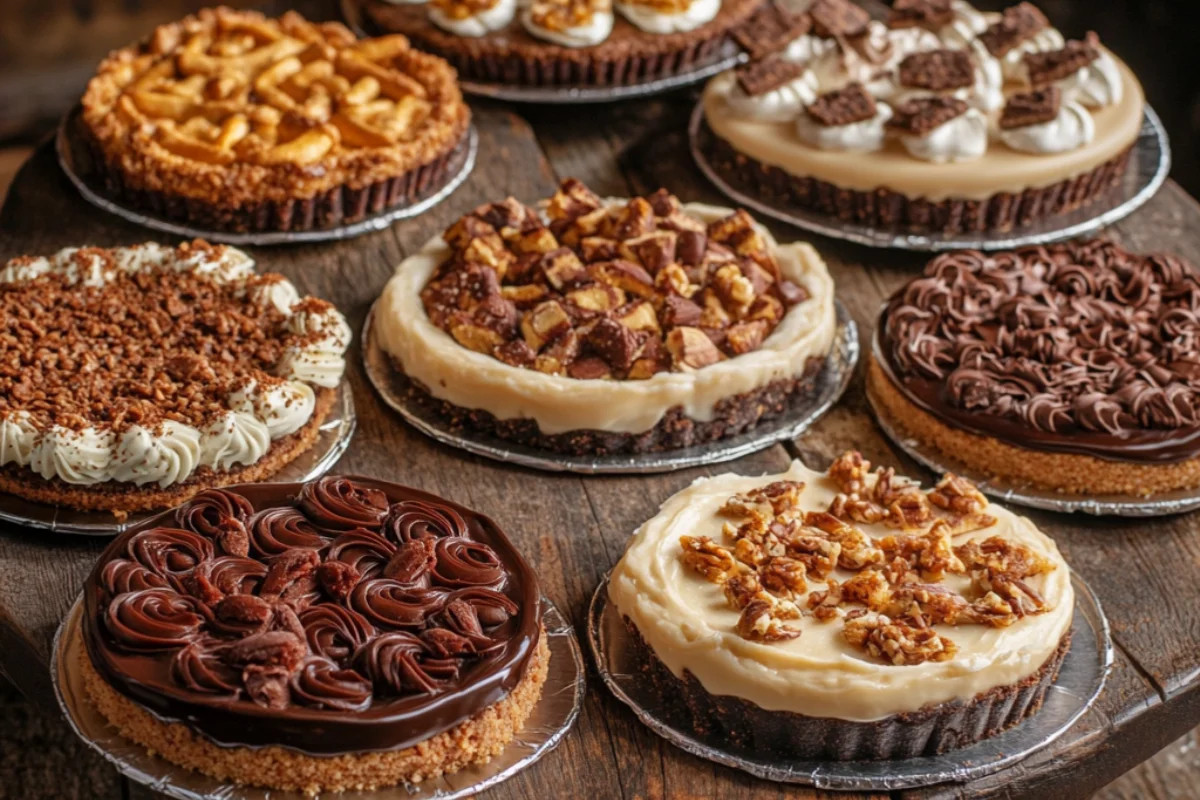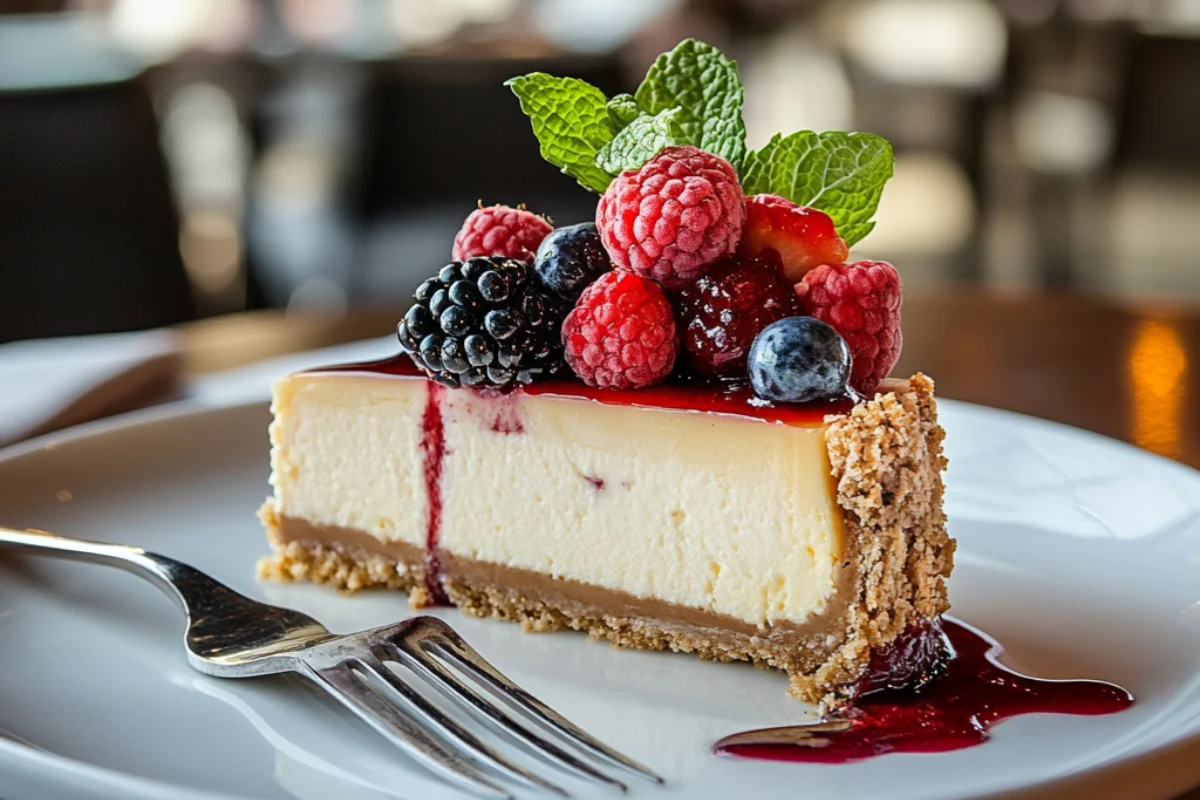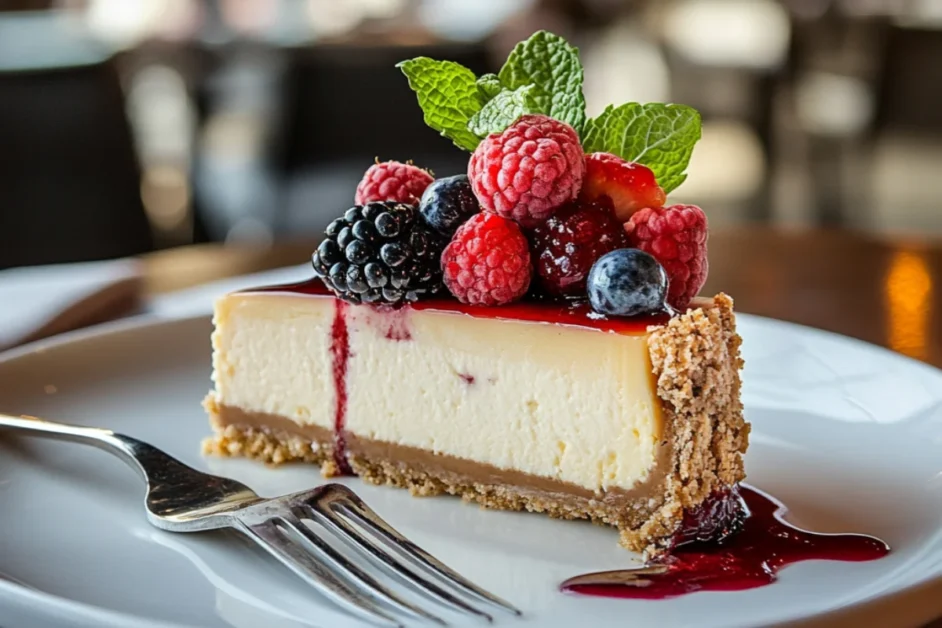Understanding whether you have to prebake cheesecake crust is essential for crafting the perfect dessert. The answer depends on your recipe, but knowing the details ensures a flavorful, non soggy base.
What Is a Cheesecake Crust?
The cheesecake crust is the foundation of your dessert. Traditionally, it’s made from crushed cookies, butter, and sugar. Popular crusts include graham cracker, Oreo, or digestive biscuit bases. These crusts provide structure and contrast to the creamy cheesecake filling.
For a detailed guide on cookie-based crusts, check out this resource on perfect crust bases.
Additionally, crustless cheesecakes are an option for those preferring a minimalist approach. However, they often lack the satisfying crunch that complements the filling.
Do You Have to Prebake Cheesecake Crust?
Do you have to prebake cheesecake crust? The short answer: it depends.
If your recipe involves a no-bake filling, prebaking isn’t necessary. However, for baked cheesecakes, prebaking offers benefits like:
- Preventing sogginess from the filling.
- Enhancing the crust’s flavor.
Accordingly, prebaking sets the crust, ensuring it remains crisp after adding the filling.
Benefits of Prebaking a Cheesecake Crust
Prebaking your crust offers undeniable advantages:
- Improved Texture: The baking process creates a firm, crunchy base.
- Enhanced Flavor: Toasting the crust brings out its nutty, buttery notes.
- Prevents Sogginess: Especially crucial for fillings with high moisture content.
- Consistency: Ensures the crust doesn’t break apart during slicing.
Explore these baking techniques for perfect results at Serious Eats.
When You Should Skip Prebaking
Certain recipes don’t require prebaking:
- No-Bake Cheesecakes: These rely on Cooling to set.
- Delicate Crusts: Prebaking can over-dry crumbly crusts.
Instead, press the crust firmly into the pan and chill it. Chilling solidifies the butter, offering some firmness without baking.
Step-by-Step Guide to Prebaking a Cheesecake Crust

Follow these steps to prebake a cheesecake crust:
- Prepare the Ingredients: Combine crushed cookies, melted butter, and sugar.
- Press into the Pan: Use the back of a spoon for even distribution.
- Preheat the Oven: Set it to 350°F (175°C).
- Bake: Bake the crust for 8-10 minutes or until golden.
- Cool: Allow it to cool before adding the filling.
For inspiration, visit our guide on how to bake with precision.
Tips for Making the Perfect Cheesecake Crust
- Choose the Right Base: Use fresh, high-quality cookies or biscuits.
- Moisture Balance: Adjust butter levels to avoid dryness or excess oil.
- Use a Springform Pan: Ensures easy removal.
- Line the Pan: Use parchment paper to prevent sticking.
- Pack the Crust Firmly: Use a flat bottomed glass to press the crust evenly into the pan.
Common Mistakes to Avoid
- Overbaking: This leads to a burnt taste.
- Underbaking: Results in a soggy crust.
- Uneven Thickness: Causes cracking.
- Skipping Chilling: Compromises structure.
- Using Too Much Butter: This makes the crust greasy and difficult to slice cleanly.
Creative Cheesecake Crust Ideas

Why stick to tradition? Here are some creative crust alternatives:
- Nut-Based Crusts: Use ground almonds, walnuts, or pecans for a rich, nutty flavor.
- Pretzel Crust: Add a salty twist that pairs perfectly with sweet fillings.
- Cereal Crust: Crushed cereal like Rice Krispies or Cornflakes offers a fun, crunchy texture.
- Chocolate Crust: Mix cocoa powder with cookie crumbs for a chocolaty touch.
- Spiced Crust: Incorporate cinnamon, nutmeg, or cardamom for a warm, aromatic twist.
Experimenting with crust flavors allows you to customize your cheesecake for any occasion.
The Science Behind Cheesecake Crusts
Cheesecake crusts rely on simple chemistry to achieve their texture. Here’s how the main ingredients interact:
- Butter: Acts as a binding agent, holding the crumbs together.
- Sugar: Melts during baking, creating a caramelized layer.
- Crumbs: Provide structure, absorbing moisture from the filling.
Understanding these interactions helps you tweak your crust for the desired outcome. For example, increasing butter makes a denser crust, while more crumbs yield a lighter base.
Understanding Regional Cheesecake Variations
Around the world, cheesecake crusts differ significantly based on regional preferences. Here are some notable examples:
- New York Cheesecake: Features a classic graham cracker crust.
- Japanese Cheesecake: Often skips the crust entirely for a soufflé-like texture.
- Italian Cheesecake: Uses crushed biscotti or almond-based crusts for a rustic feel.
- Middle Eastern Cheesecake: Sometimes includes a semolina or phyllo base for a unique texture.
Each style highlights how local ingredients and tastes influence this beloved dessert.
How to Store and Preserve Cheesecake Crusts
To ensure your cheesecake crust stays fresh:
- Refrigerate After Baking: Wrap the crust tightly to prevent moisture loss.
- Freeze for Longer Storage: Seal the crust in an airtight container before freezing.
- Avoid Freezing with Filling: Freezing the crust separately prevents sogginess when thawed.
Proper storage keeps your crust ready for use without sacrificing quality.
How Cheesecake Crusts Elevate Presentation

Your cheesecake crust doesn’t just support the dessert; it also enhances its visual appeal. Consider:
- Decorative Edges: Use the back of a spoon to create patterns on the crust’s surface before baking.
- Layered Cheesecakes: Alternate crust and filling layers for a visually stunning effect.
- Tinted Crusts: Add food coloring to crumbs for a festive appearance, such as pink for Valentine’s Day.
These small touches make your cheesecake not only delicious but also a feast for the eyes.
Cheesecake Crusts for Dietary Preferences
Accommodating dietary restrictions doesn’t mean sacrificing flavor. Here are some options:
- Gluten Free Crusts: Use almond flour or gluten free cookies as the base.
- Vegan Crusts: Replace butter with coconut oil and choose vegan friendly biscuits.
- Keto Friendly Crusts: Combine almond flour with erythritol and butter for a low-carb alternative.
With these variations, everyone can enjoy a slice of cheesecake.
Cheesecake Toppings to Pair with Crusts
Pairing the right toppings with your cheesecake enhances the overall experience. Here are some ideas:
- Fruit Compotes: Blueberry, strawberry, or cherry compotes add tanginess that complements a sweet crust.
- Chocolate Ganache: A rich topping that works beautifully with Oreo or chocolate-based crusts.
- Caramel and Nuts: Adds crunch and depth of flavor, especially on nut-based crusts.
- Whipped Cream: A simple yet classic addition that pairs with any crust.
Choose toppings that complement your crust and filling for a harmonious flavor profile.
Cheesecake Baking Techniques That Impact Crust
The method you use to bake your cheesecake significantly affects the crust’s final texture and flavor. Here are a few considerations:
- Water Bath Method: Using a water bath helps Allocate heat evenly, Stopping the crust from Overcooking or Splitting.
- Low and Slow Baking: Cheesecakes baked at a lower temperature for a longer time result in a crust with a more tender crumb.
- Crust Shielding: Covering the edges of the crust with foil during baking prevents overbrowning.
Adjusting these techniques based on your crust type can make a noticeable difference in your results.
FAQs About Cheesecake Crusts
What is the difference between American cheesecake and Italian cheesecake?
American cheesecake is cream cheese based, while Italian versions often use ricotta or mascarpone. The crust’s texture also varies.
What is churro cheesecake made of?
Churro cheesecake typically combines a cinnamon sugar base with creamy filling, reminiscent of the fried treat.
What is Mexican cheesecake made of?
Mexican cheesecake often incorporates tangy flavors, combining cream cheese with condensed milk and citrus.
Conclusion
Do you have to prebake cheesecake crust? For most baked recipes, the answer is yes. Prebaking Improves flavor, texture, and Steadiness, Confirming your cheesecake turns out perfect every time. Experiment with techniques and enjoy Forming your dessert masterpiece.

